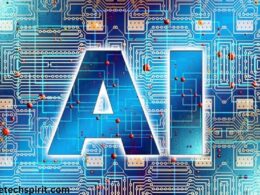Short Story Artificial intelligence (AI) refers to computer systems or machines that are capable of performing tasks that typically require human intelligence, such as visual perception, speech recognition, and decision-making.
In the context of short story writing, AI systems aim to automate or assist with creative tasks like generating plots, characters, and prose.
Table of Contents
AI’s Capabilities in Generating Short Stories
Using Algorithms and Big Datasets
AI story-writing algorithms analyze large datasets of existing stories to identify common patterns and structures. This data helps them learn rules for crafting logically coherent plots and determining causal relationships between events. The algorithms can produce unique stories by recombining narrative elements in new ways.
Employing Natural Language Processing
Natural language processing (NLP) techniques empower AI writing tools to comprehend and generate fluent, natural-sounding English.
NLP helps the AI analyze sentence structure, grammar conventions, and word usage in example texts. This linguistic knowledge allows the AI to craft fictional stories mimicking human writing styles.
Leveraging Machine Learning Models
Machine learning models like neural networks can continuously improve an AI system’s storytelling skills through iterative training. By ingesting more sample stories, these models learn to represent relationships between plot events, characters, and other literary elements. This gradually enhances their capacity for creativity.
Current AI Tools for Short Story Writing

Tools Using Pre-Written Templates
Some existing AI writing assistants use a template-based approach, allowing users to choose from different story outlines or pre-defined plots.
The AI then fills in customizable details like character names and settings. This method limits originality but offers more predictable outputs.
Advanced AI Systems for Custom Stories
More sophisticated AI tools can generate completely custom short stories from scratch. They craft unique characters, settings, and narratives based on key parameters set by the user, like genre and story length. This approach produces more variability but requires more advanced AI capabilities.
Hybrid Human-AI Collaborative Systems
Hybrid models combine AI story generation with human creativity, allowing co-creation between users and the AI system.
The AI might suggest plot points or prose samples for the human author to build upon or edit. This balances automation with human oversight over the final output.
Evaluating short story artificial intelligence
Coherence and Logical Flow
A key criterion is whether the AI’s story displays strong coherence with events unfolding logically. Sudden, inexplicable shifts in the plot or character behavior indicate poor AI writing quality. A logical narrative flow keeps readers engaged.
Creativity and Originality
AI stories should demonstrate imaginative plot twists and unique character development. Formulaic stories full of clichés suggest the AI merely recycled existing story elements rather than creating something new. Truly creative AI writing surprises readers.
Emotional Impact and Resonance
The AI should craft narratives and characters that resonate emotionally with readers. Stories lacking emotional depth often fail to establish an empathetic connection with the audience. Impactful AI writing requires emotional intelligence.
The Future of AI in Short Story Writing

Opportunities for Innovation
AI could help democratize short story writing by making it accessible to more people. It also creates new possibilities like automatically generating personalized stories for individual readers. AI represents an exciting new frontier for short fiction.
Potential Risks and Challenges
Poor quality outputs and formulaic stories lacking originality are potential pitfalls if the AI lacks sufficient training data.
Bias in the data could also lead to problematic portrayals within the AI’s writing.
Ongoing innovation and testing are required to address these risks.
The Role of Human Authors
While AI can automate parts of the writing process, human creativity remains essential for artistic expression. The role of authors may evolve into curating and refining AI-generated drafts rather than creating entirely from scratch.

Artificial Intelligence should complement human imagination, not replace it.
Conclusion
AI storytelling technology has progressed from basic plot templates to advanced systems capable of crafting original, creative narratives.
While shows promise in augmenting human authors and democratizing short fiction writing, care must be taken to ensure quality control and uphold human creativity as the driving force. With responsible development, AI and human writers can collectively push literary boundaries in exciting new directions.
FAQs
Can AI write good short stories from scratch?
The most advanced AI systems can craft original short stories, but quality varies greatly depending on training data and technical capabilities. More progress is needed before AI rivals human creativity.
Will AI make human writers obsolete?
Unlikely. AI may aid and enhance human writing, but human imagination, emotion, and life experience are still needed to craft compelling, moving stories. The role of authors will evolve to oversee AI collaboration.
What are the biggest challenges facing AI story-writing technology?
Limitations in comprehending nuanced human emotions and experience, as well as a tendency toward repetitive plot patterns unless the AI has exceptionally diverse training data. Creativity and originality remain areas for improvement.
How are researchers attempting to improve AI writing skills?
By expanding training datasets, refining machine learning techniques, and experimenting with alternative models like having two AIs collaborate on a story. There are ongoing efforts to enhance creativity.
Q: How can AI and human writers work together?
AI can help generate story premises, prose samples, or character details for human authors to then edit and curate into a polished final product. The ideal collaboration balances AI automation with human creativity.









